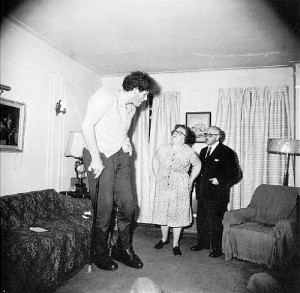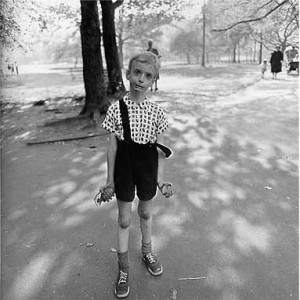Cultural theorists have taken interest in an approach to an understanding of gender that deemphasizes evolutionary theory. Rather than tracing gender and sexuality to biological features, a more recent approach places culture at the crux of what dictates the social roles we adopt as gender. What counts as man and woman is mutable because it is a social construct. The culture around us informs our perception and internalization of gender identity. Shouldn’t we try to understand the culture that constructs gender – such a central component for most people’s identity?
Gender is not stable in The Sound of Music. Gender ambiguity is conveyed through the gender scripts of characters, camera shots and editing style, and audience identification with various characters. The characters are recognizable on a gender spectrum, and not fixed in traditional gender roles. The main character – Maria – deviates from a traditional gender script in her independent and stubborn behavior, but still displays a warm, maternal instinct. She cannot be “tamed” by the Church – nuns at her convent commiserate about how to “solve a problem like Maria” – her unpredictable free spirit does not belong in the abbey.
Camera shots and editing style further blur gender lines. Laura Mulvey argues that controlled camera shots force audiences to view the world through an exclusively male perspective. However, in The Sound of Music, camera shots and editing do not rigidly occupy a man’s perspective. Stacy Wolf, in her book A Problem Like Maria: Gender and Sexuality in the American Musical, posits that the camera work “does not eschew the [male] gaze but rather opens it to variously gendered gazes and then turns it around” (Wolf, 229). Camera shots first force all characters and audience members to scrutinize Maria, but eventually switch this editing style. By the end of the movie, characters and audience members are not directing their gaze upon Maria, but sympathize, admire, and identify with her.
Since the camera jumps around to different perspectives; so in turn does audience identification with characters. An interviewee for Wolf’s book explains her own flexible cross-identification: “In some ways I identified with [Maria] but she was too femme for me, and in some ways I wanted to be the Captain and sweep her off her feet. [Maria] was totally freaked out by her feelings and didn’t know it. There [is] part of me that [is] freaked out by any sexual feelings at all too” (Wolf, 216). Gender representations in The Sound of Music are flexible and ambiguous – but this ambiguity takes on different forms. What is determinant about the ambiguity? Examining our attitudes towards the various types of ambiguous gender representations reveals our deeper anxieties about gender.
The Captain’s gendered transformation is one of the most compelling and heart warming of the movie. Our first introduction to the Captain conveys him as too rigidly male: he’s cold, strict, powerful, and emotionally incompetent. He carries his position as a Captain – a traditionally masculine role – over to his personal life and treats his children as if they were officers in his rank. Watching the Captain summon his children using a whistle is distinctly uncomfortable – for the other characters – Maria and the housekeeper – as well as the audience members because we want him to be more emotionally warm and receptive. Our discomfort with his overt masculinity makes his transformation so easy to root for. Watching the Captain open himself up to romantic and familial love – and start singing again – is one of the joys of the movie.
However, his character development is layered and complex: there was a failed and a successful attempt to transform him. The Baroness – his first romantic interest – fails to touch his heart, while Maria succeeds. Audience members might not pay much attention to the Baroness – Elsa – because the characters and audience are so obviously cheering for Maria and the Captain’s love story. But why are our attitudes towards the two women so different?
The two female characters both lack traditional femininity, but in different ways and to different extents. Elsa is described by Wolf as the “quintessential vampire lesbian” – she is literally the palest character, and her voice and air are cold and raspy. Another distinctly uncomfortable scene comes again from an inability to interact with children: Elsa’s inherent and obvious discomfort with her step-children-to-be cannot help but make you cringe. Her idea of parenting is sending the seven children off to boarding school so she does not have to deal with them. In contrast, Maria’s diminished femininity is represented through her short hair cut, and her spunky – maybe even “wild” – impulses to run around outside. The first scenes of the movie demonstrate all the ways Maria is not “how she should be.” The convent – a symbol of female purity – cannot tame Maria’s free spirit. However, Maria’s maternal warmth is evident; watching her relationship with the Von Trapp children develop make for the most jovial and pleasing scenes. Maria understands exactly what the children need, and they learn to love her as much as she learns to love them. Although both women deviate from traditional femininity, the characters in the movie and the audience members fondly receive the female character that does not deviate from maternal characteristics, thus revealing our dismissal of a woman who rejects motherhood.
The other main distinction between the two women is their class and status. Elsa is marked as wealthy and sophisticated – yet again explained by her “vampire” aristocratic qualities. Her title – the Baroness – is a hereditary title of honor; she is comfortable on the arm of the Captain as she confidently navigates large social gatherings with important Austrian figures. While the Baroness is seen smoking – a sign of sophistication at the time – in her elegantly styled clothing, Maria is seen in her humble clothes made out of drapes gallivanting around outside. She is in her element climbing trees and singing in the streets; she has no prominent status or title and could not care less. Elsa has wealth and status independent of the Captain, while Maria has neither. By linking money and status to motherhood, the movie gets us to dislike the more extreme feminine deviation that Elsa embodies. The movie literally excludes the Baroness from the joy of the movie by never having her sing.
Anne McLeer explains why we reject the Baroness’ wealth and status: Maria is not a threat to the male breadwinner as the Baroness is, which reveals our deeper anxiety (McLeer, 87). We celebrate Maria because her short haircut and adventurous personality do not actually disturb the social order in the way the Baroness’ money and status would. We cheer for the love interest that we know can eventually conform to the gender social hierarchy. And what relies on the gender hierarchy remaining in tact? Man’s power and control. Maria’s maternal instinct and humble status allows the Captain to remain in the public sphere while there is clearly no place for a non-maternal, wealthy woman.
Maria stirs up some trouble, but ultimately stabilizes the social order. She finds what she was looking for – a husband and motherhood – and settles down. She sings a duet with her new step-daughter Liesal about being a woman and falling in love, singing “low and behold you’re someone’s wife, and you belong to him.” The “problem” that Maria was once perceived as is resolved, and the nuclear family is restored because she now belongs to her husband. Therefore, the emotional transformation of the Captain – into a more loving and compassionate father and husband – does not come at the expense of him losing power or control. This inadvertently appeases the anxiety of audiences – a man can become more emotional without risking his power and control, as long as there are women to be mothers and keep the nuclear family in tact.
One might point out that the gender ambiguity in the movie is insignificant (and not importantly existent) if the gender hierarchy survives. How unstable can gender be if the hierarchy remains stable? And furthermore, the character most recognizably on a gender spectrum – the Baroness – is cast off in the end anyways; gender is stable for the central characters, and the unstable gender is literally removed. The ending’s reinforcement of traditional gender roles does not refute the movie’s gender confusion – they do not come at the expense of one another – rather, they work together to make the movie so popular. The gender hierarchy had to be temporarily in danger and unstable in order to be restored – the heartwarming satisfaction we feel at the end – as well as the Oscar for Best Picture – is contingent on the resolution of the gender confusion. The gender deviation – albeit subtle at times – makes us feel okay with the fact that we are accepting and celebrating the submission of a woman to the patriarchy. The ending is that much more satisfying because our anxiety about a dismantled gender hierarchy was appeased.
Works Cited:
Wolf, Stacy Ellen. A Problem like Maria: Gender and Sexuality in the American Musical. Ann Arbor: U of Michigan, 2002. Print.
Mcleer, Anne. “Practical Perfection? The Nanny Negotiates Gender, Class, and Family Contradictions in 1960s Popular Culture.” NWSA Journal14.2 (2002): 80-101. JSTOR. Web. 18 May 2016.



